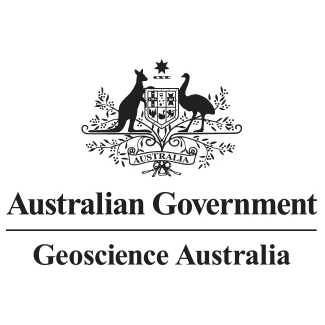Full description
The Groundwater Dependent Ecosystem (GDE) Atlas (Bureau of Meteorology, 2019) is a well-known national product that has been utilised for a wide range of applications including environmental impact statements, water planning and research. A complementary GDE dataset, Groundwater Dependent Waterbodies (GDW), has been produced from Digital Earth Australia (DEA) national data products. This new GDW ArcGIS dataset is spatially aligned with Landsat satellite-derived products, enabling ready integration with other spatial data to map and characterise GDEs across the continent.
The DEA Water Observations Multi Year Statistics (Mueller et al. 2016; DEA 2019) and the DEA Waterbodies (version 2) data product (Kraus et al., 2021; DEA Waterbodies, 2022) have been combined with the national GDE Atlas to produce the GDW dataset which delineates surface waterbodies that are known and/or high potential aquatic GDEs. The potential of a GDE relates to the confidence that the mapped feature is a GDE, where known GDEs have been mapped from regional studies and high potential GDEs identified from regional or national studies (Nation et al., 2017). The GDW dataset are aquatic GDE waterbodies, including springs, rivers, lakes and wetlands, which rely on a surface expression of groundwater to meet some or all of their water requirements.
The DEA Water Observation Multi Year Statistics, based on Collection 3 Landsat satellite imagery, shows the percentage of wet observations in the landscape relative to the total number of clear observations since 1986. DEA Waterbodies identifies the locations of waterbodies across Australia that are present for greater than 10% of the time and are larger than 2700m2 (3 Landsat pixels) in size. These waterbodies include GDEs and non-GDEs (e.g. surface water features not reliant on groundwater, such as dams). Where known/high potential GDEs in the GDE Atlas intersected a DEA waterbody, the entire waterbody polygon was assigned as a potential GDW, resulting in 55,799 waterbodies in the GDW dataset. Conversely, any GDEs not classified as known/high potential GDEs in the Atlas, due to a lack of data, are not included in the GDW product. Even though this method should remove dams from the GDW dataset (assuming they have been assigned appropriately in the GDE Atlas), due to spatial misalignment some may still be included that are not potential GDEs. Furthermore, surface water features that are too small to be detected by Landsat satellite data will be excluded from the GDW dataset.
The GDW polygons were attributed with the spatial summary of maximum, median, mean and minimum percentages for pixels within each GDW, derived from the DEA Water Observation Multi Year Statistics i.e. maximum/minimum pixel value or median/mean across all pixels in the GDW. This attribute enables comparison between GDWs of the proportion of time they have surface water observed. An additional attribute was added to the GDW dataset to indicate amount of overlap between waterbodies and aquatic GDEs in the GDE Atlas.
An ESRI dataset, AquaticGDW.gdb, and a variety of national ArcGIS layer files have been produced using the spatial summary statistics in the GDW dataset.
These provide a first-pass representation of known/high potential aquatic GDEs and their surface water persistence, derived consistently from Landsat satellite imagery across Australia.
References:
Bureau of Meteorology, 2019. Groundwater Dependent Ecosystems Atlas. http://www.bom.gov.au/water/groundwater/gde/index.shtml
DEA Water Observations Statistics, 2019. https://cmi.ga.gov.au/data-products/dea/686/dea-water-observations-statistics-landsat
DEA Waterbodies, 2022. https://www.dea.ga.gov.au/products/dea-waterbodies
Krause, C.E., Newey, V., Alger, M.J., and Lymburner, L., 2021. Mapping and Monitoring the Multi-Decadal Dynamics of Australia’s Open Waterbodies Using Landsat, Remote Sensing, 13(8), 1437. https://doi.org/10.3390/rs13081437
Mueller, N., Lewis, A., Roberts, D., Ring, S., Melrose, R., Sixsmith, J., Lymburner, L., McIntyre, A., Tan, P., Curnow, S. and Ip, A., 2016. Water observations from space: Mapping surface water from 25 years of Landsat imagery across Australia. Remote Sensing of Environment, 174, 341-352, ISSN 0034-4257.
Nation, E.R., Elsum, L., Glanville, K., Carrara, E. and Elmahdi, A., 2017. Updating the Atlas of Groundwater Dependent Ecosystems in response to user demand, 22nd International Congress on Modelling and Simulation, Hobart, Tasmania, mssanz.org.au/modsim2017
Statement:
The Groundwater Dependent Waterbodies (GDW) dataset was created from a combination of two datasets: the aquatic GDEs from the national Groundwater Dependent Ecosystem (GDE) Atlas and the Digital Earth Australia (DEA) Waterbodies dataset.
The DEA Waterbodies dataset identified over 300,000 waterbodies that are larger than 2700m2 (3 Landsat pixels) and are observed for more than 10% of the time from 1986 to present. The GDW was created by retaining those waterbodies that intersect aquatic GDEs in the GDE Atlas of known or high potential. This was generated by using ‘Select by location’ in ArcMap to select all waterbodies that had some part of the polygon in an aquatic GDE, resulting in 55,799 waterbodies.
Due to spatial misalignment between the GDE Atlas and the DEA Waterbodies dataset, waterbodies may be included or omitted from the dataset which may or may not represent potential aquatic GDEs. The attribute ‘overlap’ was added to the GDW to add a measure of confidence to the selected GDWs. The overlap attribute was created by adding the attribute ‘overlap’ and dividing the area of the GDE(s) within the waterbody by the area of the waterbody (square metres in Albers projection). The lower the number, the less overlap (in same cases < 0.001%); however, in some instances it was decided these polygons are still valid GDEs (e.g., a known spring within a large waterbody). Therefore, rather than omitting polygons with very small overlap, all potential GDE waterbodies were retained. Furthermore, overlap between the GDE Atlas and the DEA Waterbodies dataset can be over 100% due to some locations having multiple overlapping known or high potential GDEs.
Using the DEA Water Observation Statistics (2019), a script was created to calculate the mean/median values and to extract the minimum/maximum values for each GDW. These attributes were added to the dataset to record spatial statistics of the percentages of time that water has been detected relative to the total number of clear observations (1986 to present) for each GDW. The script to create the GWD can be found on github: https://github.com/GeoscienceAustralia/GWB-GDE-DEA/tree/main/Create_GDW.
![]()
![]()
![]()
![]()



